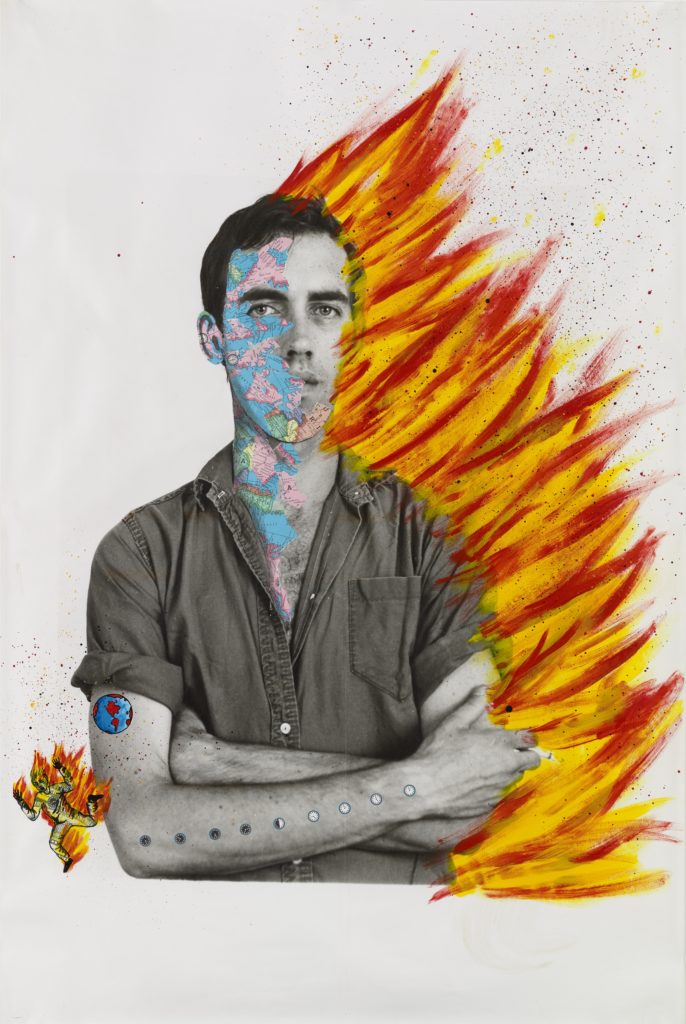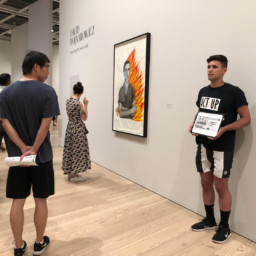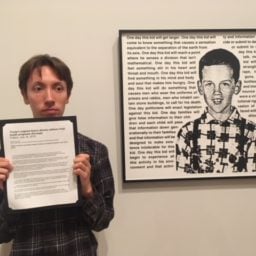David Wojnarowicz has entered art history largely through controversy. Twenty years ago, his work, denounced in Congress as “federally subsidized porn,” was Exhibit A in the conservative attack on the National Endowment for the Arts.
It would be easy to confine Wojnarowicz to the historical moment when his fury at the political and religious establishment made him a driving force in the ‘90s Culture War. But a spate of new shows in New York—the retrospective “History Keeps Me Awake at Night” at the Whitney Museum of American Art, a selection of archival materials at New York University’s Mamdouha Bobst Gallery, and an exhibition of his installations at P.P.O.W Gallery—reveal a far more complex, nuanced, and protean artist.
Taken together, these shows suggest that there are many Wojnarowiczs. He is the doomed outsider in the mode of his heroes Rimbaud and Genet, the Cassandra of the AIDS crisis, and the voice of the crime-ridden, drug-infested East Village so romantically reimagined today by gentrifying hipsters. But he was also an impassioned writer, an accomplished painter, photographer, filmmaker, installation artist, and a profound thinker about the onslaught of materialism, greed, inequality, and unfettered technological development that threatens to engulf us today.
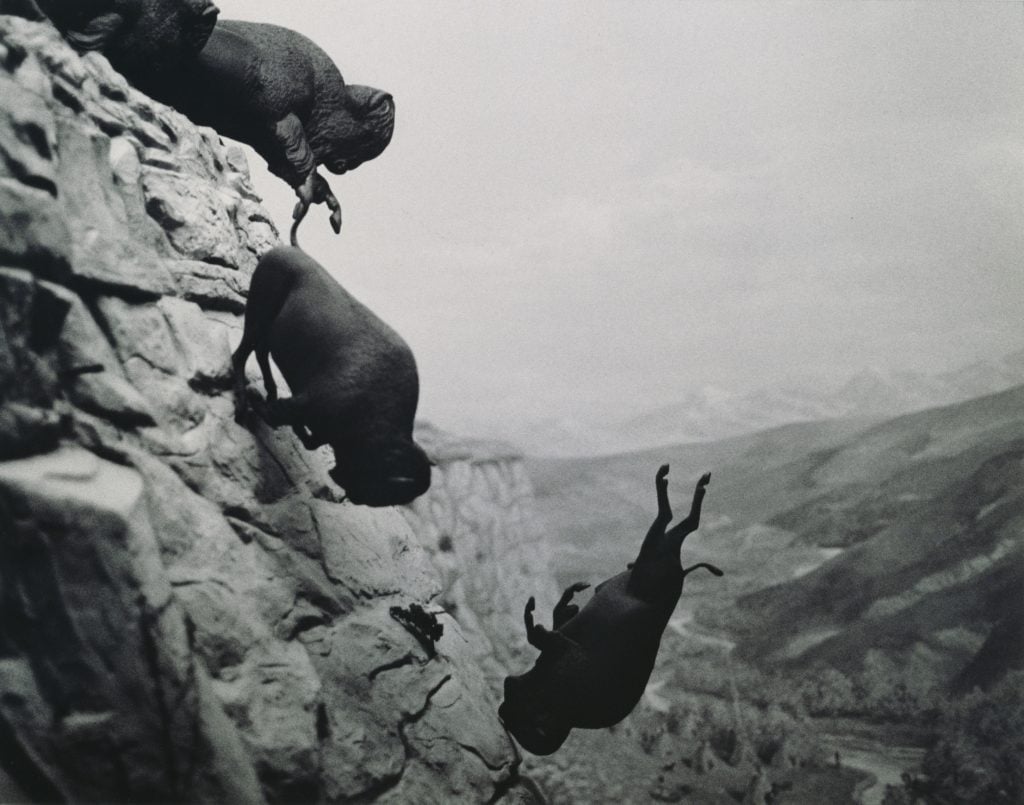
David Wojnarowicz’s Untitled (1988–89). Courtesy Second Ward Foundation. Image courtesy of the Estate of David Wojnarowicz and P.P.O.W., New York.
Wojnarowicz, the Thinker
In an era when AIDS is a largely controllable disease in many parts of America and gay marriage is the law of the land, it is this last persona—the thinker—that feels most contemporary.
In his writings and his art, Wojnarowicz was preoccupied with the gulf between what he termed the “pre-invented world” of coercive social structures and “the world” of authentic feeling. Organized religion, politics, and technology belonged to the first, while sensation, nature, and the transcendent ecstasy of sex belonged to the second. Wojnarowicz’s work is generally interpreted as a primal scream of protest against the un-freedom of human society. But “the world” runs through as a lyrical undercurrent that celebrates beauty, love, and the natural world.
The contradictions Wojnarowicz explored were rooted in his life story. In the Whitney catalogue, Wojnarowicz’s biographer Cynthia Carr does an admirable job sorting out the facts behind a biographical narrative so lurid it could seem fictive.
Born in New Jersey in 1954, Wojnarowicz was the child of an abusive alcoholic father who kidnapped him from his teenage mother, abandoned him to foster homes and Catholic boarding schools, and periodically reappeared to torment him and his two siblings. Escaping to the streets of Manhattan, the adolescent Wojnarowicz supported himself as a hustler. One of his primary hangouts was the seedy Hudson piers, not far from the location of his current retrospective and now transformed into a tourist mecca.
Wojnarowicz eventually finished high school and settled in the East Village, where he became part of the gritty underground art scene. An important turning point was his brief sexual affair and lifelong friendship with Peter Hujar, a photographer 20 years his senior who gave him encouragement and direction as an artist.
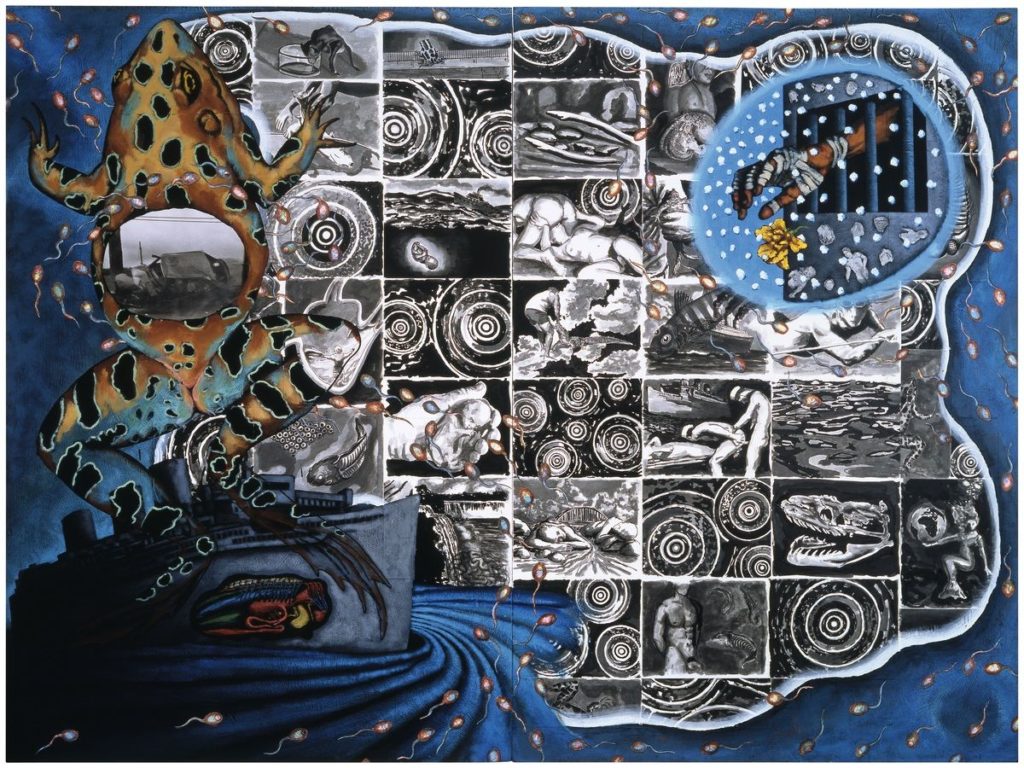
David Wojnarowicz’s Water (1987). Second Ward Foundation. Image courtesy the Estate of David Wojnarowicz and P.P.O.W, New York.
Developing a Vocabulary
As someone who felt in all ways excluded from conventional society, Wojnarowicz developed a vocabulary of symbols and images intended to disrupt the veneer of an oppressive social order. His writings and visual art employ collage as a way to break through to the authentic reality beneath the “pre-invented world.”
In the early 1980s, the Whitney retrospective shows him recycling stencils of burning houses, falling men, camouflaged planes, and other references to a world in disarray. These were followed by collages containing images of mutant heads, xeroxed fragments of dollar bills, maps that had been torn apart and pieced back together, and, in a number of works, drawings based on photographs he had taken of a sleeping Peter Hujar, whose fevered dreams appear to be conjuring our dystopic reality.
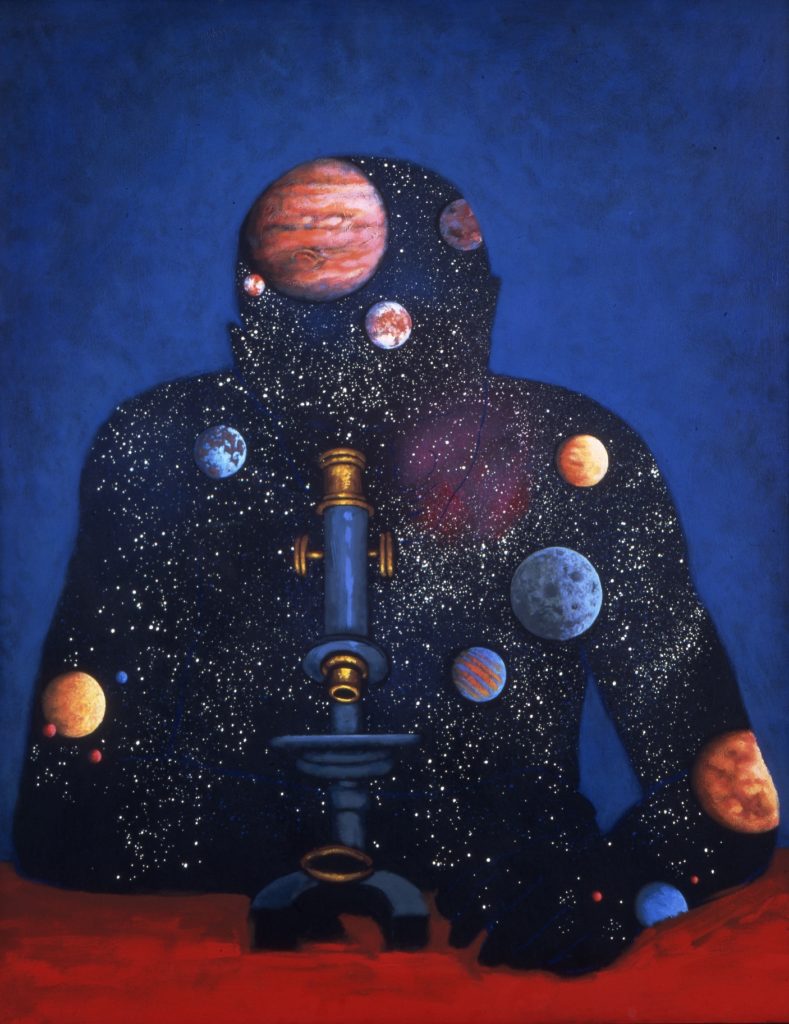
David Wojnarowicz’s Something from Sleep III (For Tom Rauffenbart) (1989). Image courtesy of the Estate of David Wojnarowicz and P.P.O.W., New York.
By 1986, encouraged by Hujar, Wojnarowicz began creating densely composed paintings that married imagery of industrial debris, apocalyptic landscapes, and fantastical, mythic, and natural creatures. They feature globes peeled back to expose human brains, bulldozers burrowing deep in the earth, comic devils, and exploding kachinas. But there are also flashes of beauty in the blue skies, green stalks, and embracing male lovers.
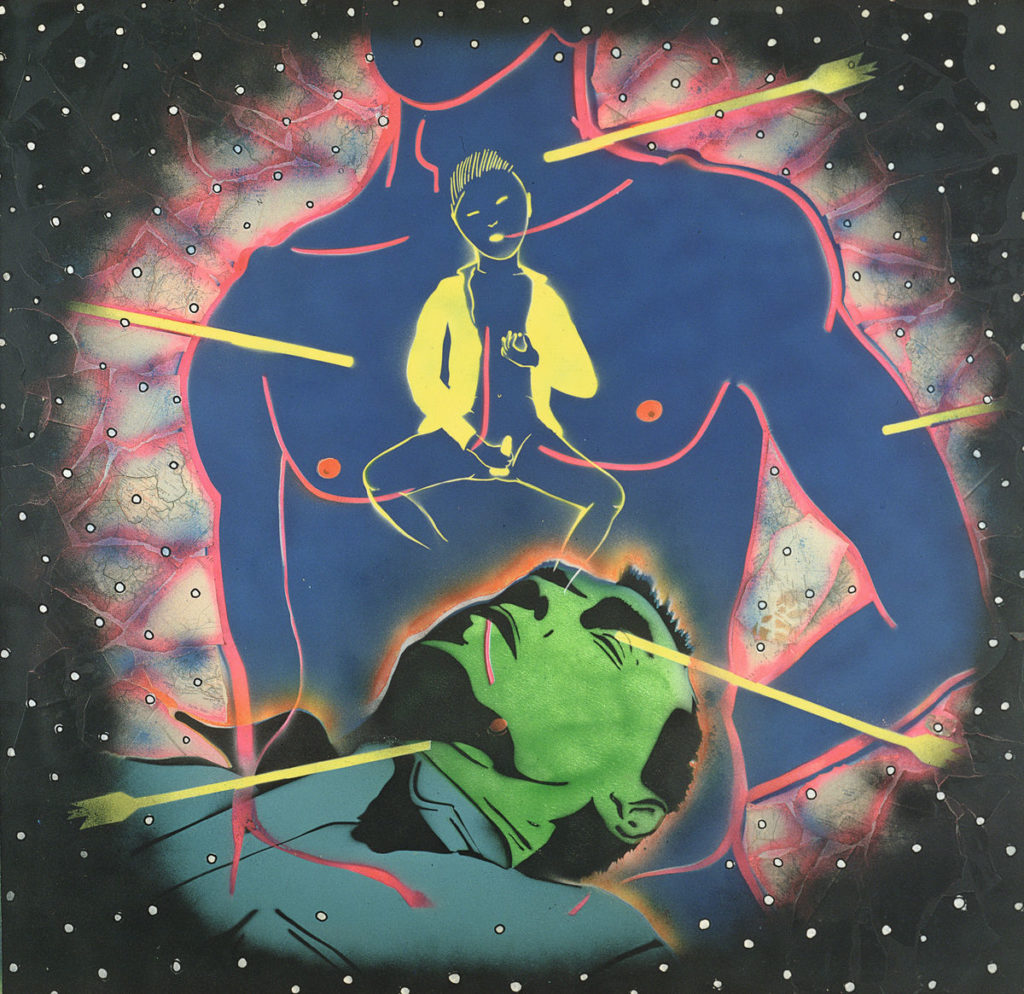
David Wojnarowicz’s Peter Hujar Dreaming/Yukio Mishima: Saint Sebastian (1982). Image courtesy the Estate of David Wojnarowicz and P.P.O.W, New York.
Hujar’s death from complications of AIDS in 1987 and Wojnarowicz’s own subsequent diagnosis exacerbated his apocalyptic vision. The work reveals an increasing preoccupation with death as Wojnarowicz targeted society’s disregard of the AIDS epidemic and railed against the homophobia that fueled that neglect. This was the period that brought him public infamy, as he inserted collaged vignettes of gay porn into bleak technological landscapes and produced texts, some laid over the artworks, excoriating a society that was condemning him to death.
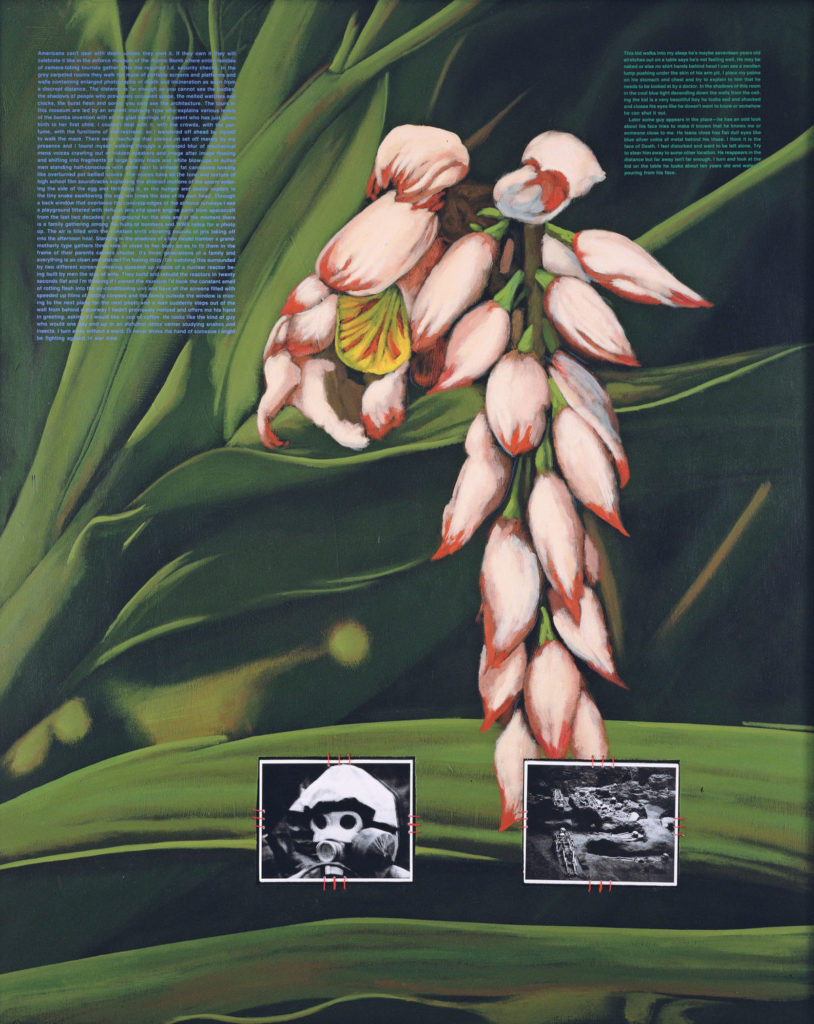
David Wojnarowicz’s Americans Can’t Deal with Death (1990). Image courtesy the Estate of David Wojnarowicz and P.P.O.W, New York.
But even within this bleakness, lyricism resurfaces. One of his final series of paintings, created in 1990, two years before his death, features lush paintings of exotic flowers. These form the background to printed excerpts—by turns erotic, political, and philosophical—from his forthcoming autobiography.
Light and Darkness
The Whitney retrospective, curated by David Breslin and David Kiehl, charts Wojnarowicz’s development as a painter, filmmaker, and photographer. Meanwhile, P.P.O.W Gallery, which has represented the artist since 1988, examines the collaborative, theatrical side of his work.
The exhibition pulls together extant pieces of some of his major installations, revealing a dramatic flair that often shades into Grand Guignol. An installation from 1985 is described in the exhibition brochure as “an apocalyptic version of the ancient Mayan genesis myth” and includes images of the Manhattan skyline in flames, a burning child, and a dead tree covered in animal skulls whose eye sockets flash with Christmas lights. In a strange anticipation of the ongoing Trump apocalypse, the work was commissioned by the art dealer Robert Mnuchin, father of the current US Treasury Secretary.
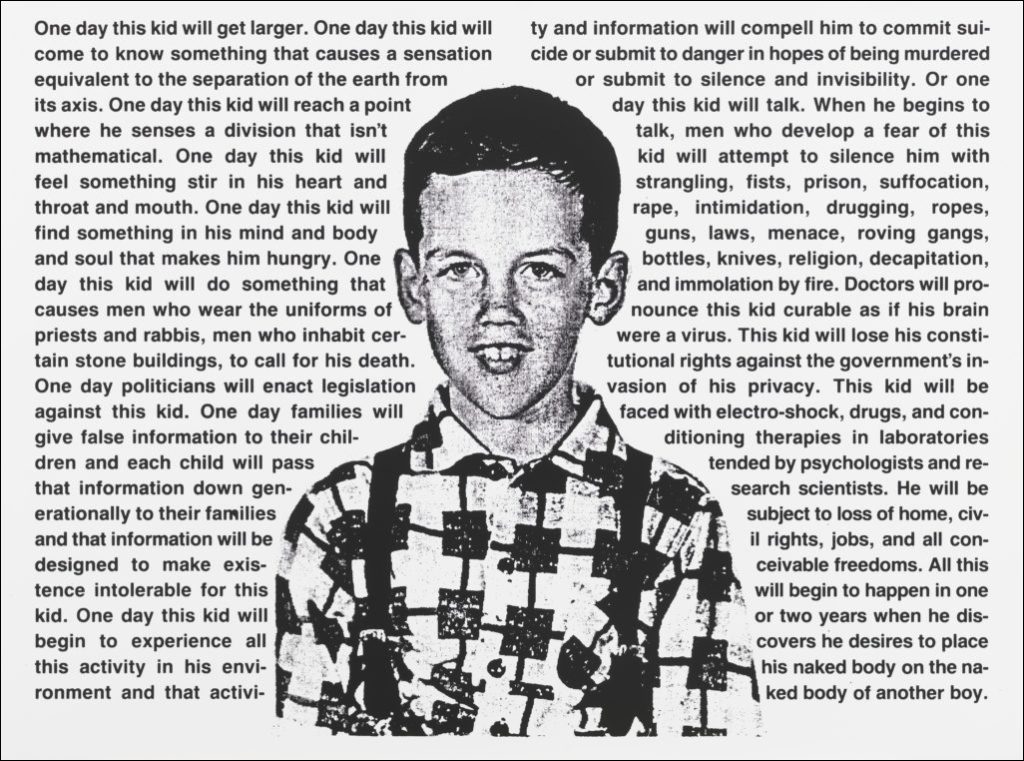
David Wojnarowicz’s Untitled (One day this kid…) (1990). Image courtesy of the Estate of David Wojnarowicz and P.P.O.W., New York.
Also included is a film created with filmmaker Richard Kern. This family saga is based on Wojnarowicz’s own dysfunctional family, recasting the artist as a psychotic Goth murderess. Later installations pull together imagery from his whole career to expose the politics of the Culture Wars and the horror of living under the death sentence of AIDS.
In one of his seminal essays, Wojnarowicz wrote, “Hell is a place on Earth, Heaven is a place in your head.” Both places are represented here, but then, as now, the forces of darkness seem poised to dominate.
“David Wojnarowicz: History Keeps Me Awake at Night” is on view at the Whitney Museum of American Art in New York until September 30.
“The Unflinching Eye: The Symbols of David Wojnarowicz” is on view at NYU’s Mamdouha Bobst Gallery until September 30.
“Soon All This Will be Picturesque Ruins: The Installations of David Wojnarowicz” is on view at P.P.O.W Gallery until August 24.
